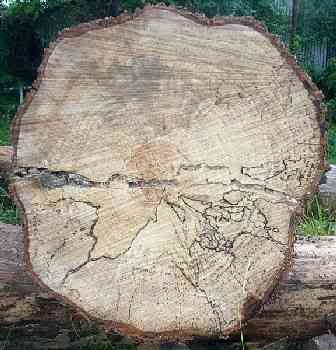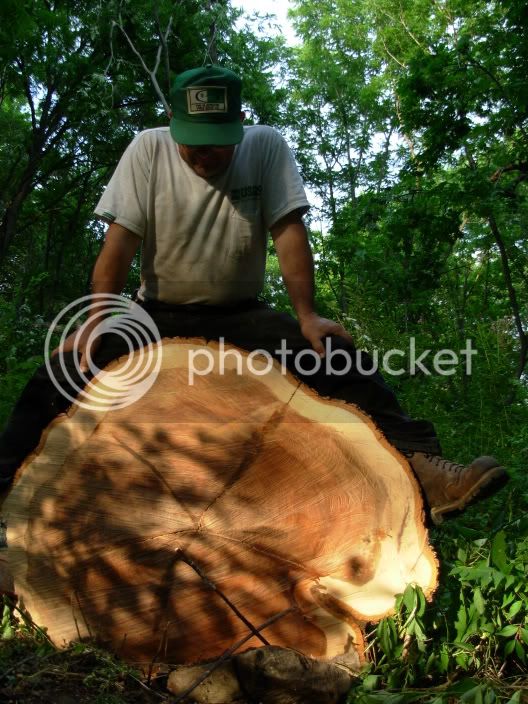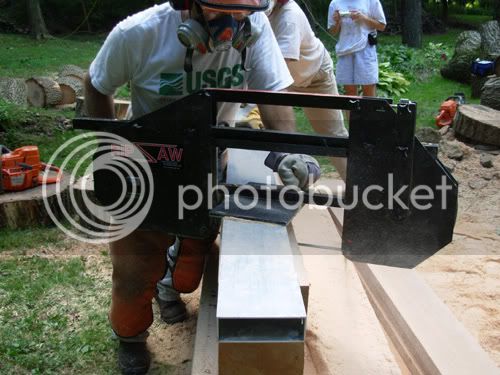flht01
ArboristSite Operative
This is a picture of a pecan log I'm going to cut up in a few days. As you can see, the hinge caused it to split partway up the log.

Any suggestions on the best way to cut it? I'm planning on doing a 3 sided cant just like it is in the picture and cutting either 1" or 5/4" boards right thru the split. Maybe I'll get a spalted board or two.
I'm also playing with posting pictures
Kevin

Any suggestions on the best way to cut it? I'm planning on doing a 3 sided cant just like it is in the picture and cutting either 1" or 5/4" boards right thru the split. Maybe I'll get a spalted board or two.
I'm also playing with posting pictures
Kevin
Last edited:






 but if it's spalted I'll do it for good flat boards. Thanks
but if it's spalted I'll do it for good flat boards. Thanks


